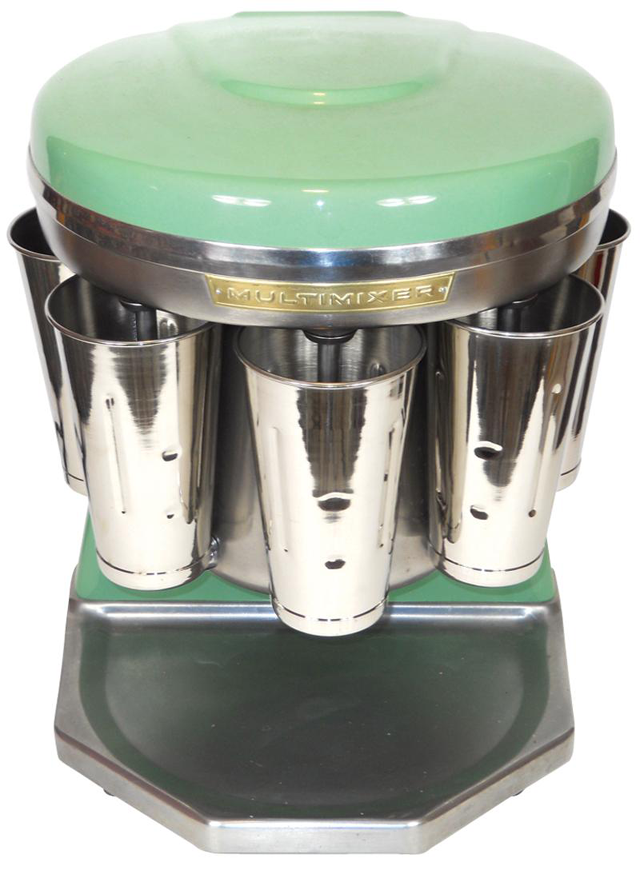
 Fast food pioneer Earl Prince Sr. found that his Prince Castle malted milkshake, titled the "One in a
Million" quickly wore out the available drink mixers. This was the late 1930's and the standard soda
fountain machines were not equal to the demanding task of mixing hundreds, then thousands, of drinks
every day.
Fast food pioneer Earl Prince Sr. found that his Prince Castle malted milkshake, titled the "One in a
Million" quickly wore out the available drink mixers. This was the late 1930's and the standard soda
fountain machines were not equal to the demanding task of mixing hundreds, then thousands, of drinks
every day.
Mr. Prince and John Brotheridge found that a heavy duty centrally mounted motor driving individual mixing shafts, or spindles solved the problem and the "Multimixer" was born. The original "Model One" was a six spindle unit that revolved on a fixed base allowing an operator at the front of the counter access to all spindles.
During the years of World War II the company was diverted to producing aircraft carburetor parts and other critical wartime components. It was during this period that the two men decided to redesign the Multimixer by going to a fixed base with five spindles. This was the beginning of the "Model 9B" style mixers.
A paper cup salesman by the name of Ray Kroc called on Mr. Prince for his store cup needs and was impressed with the Multimixer and the volume of drinks that the unit could make in a short period of time. Mr. Kroc was given exclusive rights to sell the Multimixer nationwide.
One of Mr. Kroc's customers was a restaurant owned by Maurice and Richard McDonald that used 8 of the mixers. The uniqueness of the restaurant was its assembly line format to prepare and sell a large volume of hamburgers, French fries and milk shakes. Kroc took this concept and in 1955 open the first of the Kroc McDonalds restaurants. By 1961 there were 230 McDonald franchises in the United States. This gave the Multimixer a great amount of exposure and appeal to other restaurants that served malts and shakes.
During the late 1960's the Multimixer was redesigned to work with paper cups that were used for direct mixing rather than mixing in a steel or glass container and then transferring the drink to a paper cup. This redesign also allowed for a number of other changes that helped the mixers run more efficiently.
The early mixers were available in three or five spindle models with short or long spindles and a variety of motor option and could even be wall mounted if necessary. The mixers were available in a wide variety of colors as well as a bright chrome finish.
Today's units have a brushed chrome finish with several components made from stainless steel. They can be purchased with either 3 or 5 spindles. The spindle can have from one to 4 agitators on each spindle to help mix specific types of shakes or malts.
Today's units are shipped to many foreign countries and have the reputation of lasting many years. It is not uncommon to get a request for parts or service on a mixer that is 40 to 45 years old. As you can see the Multimixer has a long and somewhat colorful history.